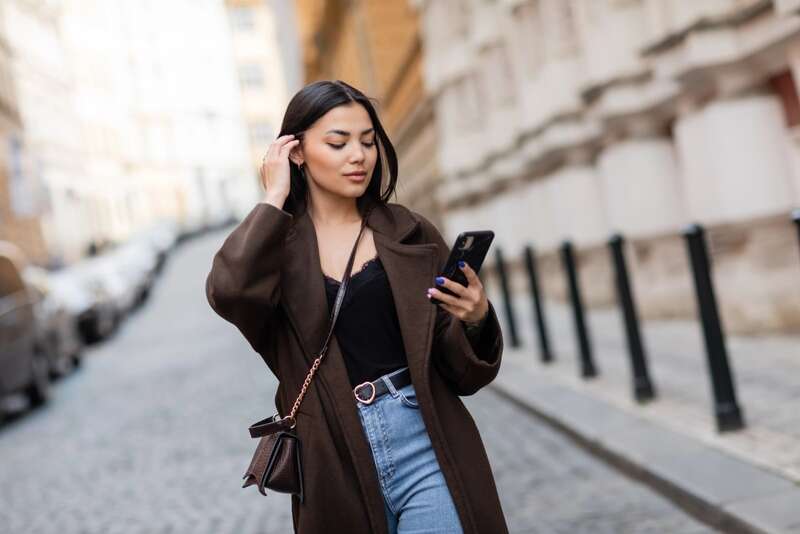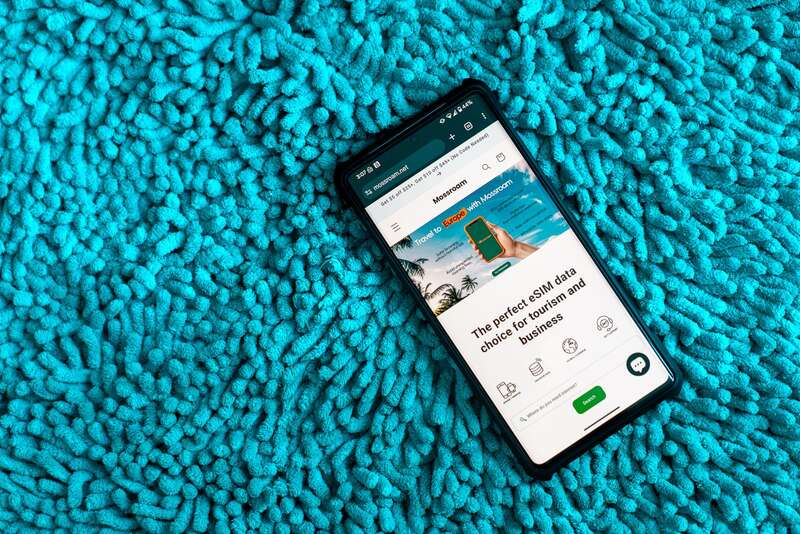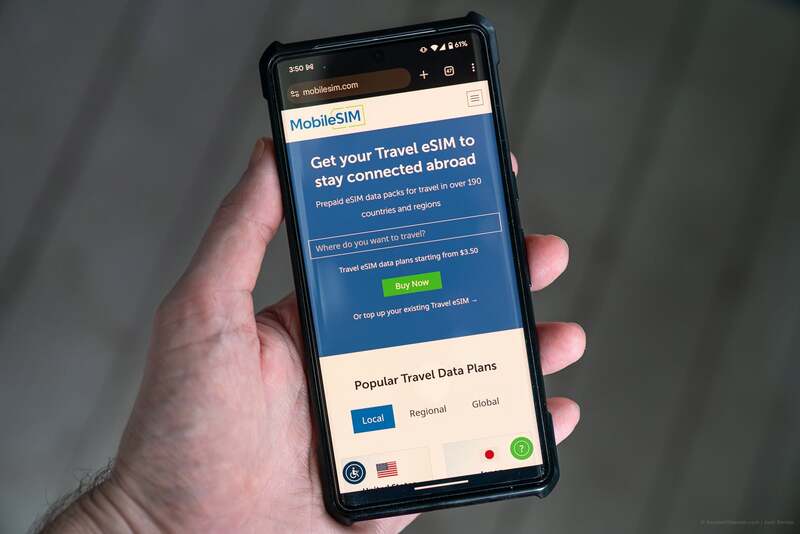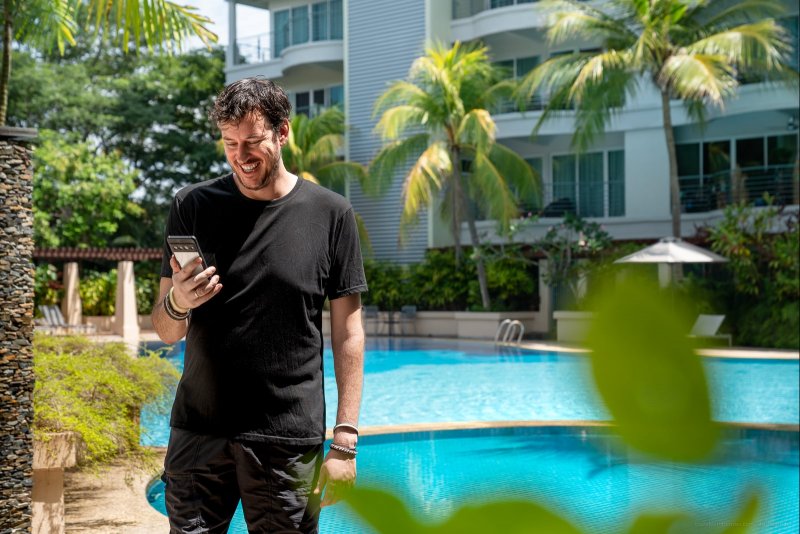Good sleep is the cornerstone of health.
Even though we don't talk about it as much as we should, sleep health is critical to every aspect of your life – personal and professional. And health has become a topic I've put a lot of time into learning about in recent years.
This isn't a Human Biology class, but I'll briefly explain the basics in everyday language. Every part of the body works in its own rhythm, and when in sync, it all works together beautifully. The master beatmaker is the circadian rhythm – a 24-hour cycle that controls essential functions and regulates our alertness, sleepiness, mood, metabolism, and immune system. While light is the main driver of this cycle, it's also affected by food intake, stress, physical activity, social environment, and temperature.
It makes sense. Through millions of years of evolution, we've been wired to live our lives around the sun – the source of life. We're naturally tuned to sunrise and sunset.
But every day, we're fighting against this natural programming – surrounded by bright lights at night, modern lifestyles, international travel, increased stress, and anxiety.
As a result, many of us are suffering because we're no longer "in sync" – our biology is working against us. This shows up as poor sleep quality, daytime fatigue, depression, mood issues, brain fog, and chronic health problems.
Fortunately, there are ways to help get back into sync, and the leading factor is getting a solid night's sleep consistently.
Easier said than done? I hear you.
I've tried a range of strategies over the last few months to improve my sleep quality. So, when I heard about the Lumos Smart Sleep Mask, which uses light therapy techniques to help you fall asleep faster, stay asleep, and wake up more refreshed, I knew I had to try it.
After 1 week of nightly use, the results surprised me.

The Science Behind Light Therapy
Ever wonder why you feel energized on sunny mornings or sleepy on cloudy days? It's not just your imagination – it's science. Research from Stanford's Center for Sleep Sciences and Medicine has shown that light exposure plays a crucial role in regulating our sleep patterns, particularly through something called "light pulses."
Think of these light pulses as gentle nudges to your internal clock. When short bursts of light hit your eyes – even through closed eyelids – they send signals to your brain that help adjust your body's timing system. It's similar to how our ancestors' bodies would respond to sunrise, but now we can deliver these signals in a controlled way.
This isn't just theoretical research. The technology has been extensively tested and refined through collaborations with NASA, the US Department of Defense, and the National Science Foundation. Why such heavy hitters? Because managing sleep cycles is crucial for astronauts in space, military personnel across time zones, and people pushing the boundaries of human performance.
The really interesting part? The studies found that you don't need constant light exposure to make this work. Brief, precisely timed light pulses can be just as effective – if not more effective – than continuous light therapy. In double-blind, placebo-controlled studies (that's the gold standard in medical research), the results were pretty impressive:
- People adjusted to new time zones up to 44% faster after outbound flights
- Recovery from inbound flights (usually the harder direction) improved by 33%
- Participants fell asleep up to 37% faster
- Night shift workers reported up to 70% less fatigue
What makes this particularly exciting is that the technology works with your body's natural processes rather than fighting against them. Unlike sleep medications that can leave you feeling groggy, light therapy helps reset your internal clock to work more effectively on its own.
Of course, timing is everything. Just like how looking at your phone's bright screen right before bed can keep you awake, the wrong light at the wrong time can disrupt your sleep. That's why the research also focused on finding the perfect balance – exactly when and how much light to deliver for the best results.
This research forms the foundation of how the Lumos Smart Sleep Mask works. But how does this science translate into a practical device you can actually use?
Let's look at that.
How Does Lumos Smart Sleep Mask Work?
Now that we understand the science, let's look at what you actually get and how to use it. The Lumos Smart Sleep Mask isn't your typical sleep mask – it's a clever piece of tech wrapped in a comfortable package.
Technical Components
At its core, the mask consists of two main parts: an electronic insert that delivers those precisely-timed light pulses we talked about and a soft, removable cover that makes it comfortable to wear. It's surprisingly lightweight at just 60 grams – about the weight of a small chocolate bar.


The mask connects to your phone via Bluetooth LE, and this is where the magic happens. Using the companion iOS app (sorry Android users, your version is still in development), you can customize your light therapy program based on your sleep goals. Whether you're trying to adjust to a new time zone or shift your sleep schedule earlier, the app calculates the optimal light exposure timing for your needs.
What's neat is that the Lumos app instructions include the use of their blue light blocking goggles (sold separately). These aren't just ordinary blue blockers – they're designed to work in tandem with the mask, helping you avoid the wrong kind of light at the wrong time and reducing eye fatigue. Think of them as the protective gear for your circadian rhythm.

Power-wise, the mask holds enough charge for about 4 days of normal use, and you can easily recharge it using the included USB-C cable.
Setup and Daily Usage
Getting started with Lumos is pretty straightforward:
1. Charge up your mask using the USB-C cable
2. Download the free Lumos Sleep app and create your profile
3. Connect your mask to the app via Bluetooth
4. Choose your sleep program (like "Schedule Trip" for travel or "Rise & Shine" for general use)
The app will ask for some basic information like your age, typical sleep schedule, and how sensitive you are to light while sleeping. This helps tailor the experience to your needs.
When it's time to use the mask, the process is simple:
- Before bed, start your selected program in the app
- Put on the mask, making sure the straps sit comfortably above and below your ears
- Go to sleep as usual
Easy!
Here are a few app screenshots:
Getting started:
Creating first light program:
The app is smart enough to adjust your light therapy program based on when you actually go to bed, not just when you planned to. It'll also tell you when to use the blue light blocking goggles – typically in the evening hours before bed or at specific times during time zone adjustment periods.
One thing I particularly appreciate is how the mask is designed for real-world use. The cover is machine washable (because nobody wants a grimy sleep mask), and the adjustable strap means you can find your perfect fit whether you're a side or back sleeper.
Who Is Lumos Smart Sleep Mask For?
After spending time with the Lumos Smart Sleep Mask, it's clear that while it's a powerful tool for better sleep, it's not for everyone. Let's break down who'll get the most value from it – and who might want to look elsewhere.
Ideal Users
First up, if you're a frequent flyer, this mask might just become your new best friend. Whether you're crossing time zones for business meetings or vacation, it can help you adapt faster and avoid spending half your trip in a jet-lagged fog. Considering the value of the business deal you’re putting together, or the months of savings to pay for this much-needed break, the mask pays itself off many times over after just one trip.
Night shift workers, I see you. If you're constantly fighting against your body's natural sleep rhythm because of work schedules, the Lumos mask could be a game-changer. It helps your body understand when it should be alert and when it should wind down, even when those times don't match the sun.
Then there are the folks with irregular sleep schedules – maybe you're a freelancer with variable hours, or your schedule changes from week to week. The mask can help you maintain a more consistent sleep pattern despite the irregularity in your life.
Modern life itself can mess with your circadian rhythms. If you're dealing with late-night screen time (hello, Netflix), high stress levels, or living in a bright city environment, the mask can help counteract these disruptions and get your sleep back on track.
Early birds struggling to actually be early birds will also find value here. If you need to wake up early for your kids or exercise routine but struggle to fall asleep at night, the mask can help shift your sleep schedule earlier naturally.
Check out these testimonials from users:
Who Should Skip (or Delay)
Now, let's talk about who might want to pass on the Lumos mask.
If you have been diagnosed with sleep disorders, this isn't your solution. While the mask can help with circadian rhythm issues, it's not designed to treat medical conditions. Always work with your primary healthcare provider for diagnosed sleep problems.
Budget-conscious shoppers might want to save up before taking the plunge. Yes, the mask is a premium product with a price tag to match. While I believe a good night's sleep is worth investing in (and the cost per use works out quite reasonably over time), I understand it's a significant upfront investment. Save up your pennies – because a solid night's sleep is invaluable, but so is being financially comfortable with your purchase.
Finally, if you're someone who prefers to keep technology out of your bedroom or you find dealing with apps and devices stressful, this might not be your cup of chamomile tea. The Lumos mask requires comfort with basic tech usage and a willingness to use an app as part of your sleep routine.
My Experience with Lumos Smart Sleep Mask
Let me share my hands-on experience with the Lumos Smart Sleep Mask, from unboxing to my first week of use.
First Impressions
Opening the box, I was pleasantly surprised by how premium everything felt. The mask comes in sleek black packaging along with a branded travel bag, USB cable, and the mask insert. The build quality immediately stands out – this isn't your average pharmacy sleep mask.


The mask itself is impressively lightweight at just 60 grams, with fabric that feels soft and luxurious to the touch. The tech heart of the device – the mask insert – slides easily into a convenient Velcro-sealed side slit. I appreciated the thoughtful design: the LED lights align perfectly with the mask holes and always stay in place, and the USB charging port matches up with a small opening at the top, eliminating any need to remove the insert except for washing. There's even a clever pause button hidden between the LED lights, about a centimetre toward the mask's top – easy to find by touch once you know where it is.

One standout feature is the adjustable strap system. Unlike bulkier alternatives I've tried, Lumos uses slim Velcro straps that split into two bands, sitting comfortably above and below your ears. This design keeps the mask securely in place without the bulk or discomfort of traditional straps.



Setting up the app was relatively straightforward, though I did spend some time exploring its features. The interface is clean and intuitive, guiding you through creating your sleep profile with questions about your typical patterns and light sensitivity. Once you've configured your preferred program, following the instructions is simple.
Daily Usage Notes
Living with the Lumos mask is surprisingly effortless. The battery life met expectations – I used about 20% per night, almost getting a full workweek on a single charge. Recharging from empty to 100% took less than 45 minutes. I particularly appreciate how the app automatically adjusts if you start your light program later than planned, removing any pressure about precise timing.
During sleep, the mask stays perfectly positioned, and the light pulses are so gentle. If you're worried about being disturbed by the lights, don't be – they're remarkably unobtrusive. With the “Rise & Shine” program, the LEDs gradually turned on automatically to naturally mimic the sunrise (based on the current location and time zone setting from the phone).
Tip: While the app does not include a list of LED light patterns and definitions, I discovered that 3 slow orange blinks mean that the current light program has finished. Hopefully, a future version of the app will add these definitions to gain a better understanding of the mask behaviour and for troubleshooting on rare occasions.
Here's an interesting note for Android users: while there's no Android app yet, I found a workaround using my MacBook Pro to run the iOS app. The Bluetooth connection is easy and handled automagically through the app (not via the macOS Bluetooth settings). Once running, you can leave your laptop elsewhere or turn it off altogether; no need to place the laptop on the bedside table. This approach requires a MacBook with Apple silicon (M1 or newer).
Results After One Week
There's definitely an adjustment period when starting with any new sleep device. The first couple of nights, you're aware of wearing something new, but by night three or four, it becomes second nature. The app's progress tracking helped me notice gradual improvements in my sleep patterns.
I also got into the habit of wearing the blue light blocking goggles in the evening hours before bed – they're surprisingly comfortable, even on top of my reading glasses – and it feels like an easy addition to my routine to help wind down for the night.


My results were encouraging: I found myself waking up on schedule more consistently and generally feeling more energetic and alert throughout the day. Like any sleep-related experience, the effects varied somewhat based on daily activities, diet, and pre-bed routine. But what impressed me most was how the mask noticeably improved my sleep quality without any side effects – something that can't be said for most sleep aids.
I'm particularly excited to try the "Schedule Trip" program during an international trip next month. I'll be updating this article with my jet lag-fighting experience, so stay tuned for that real-world test.
Update December 2024:
I recently returned from an overseas trip where I used the “Schedule Trip” program to combat the common effects of jet lag. There was 3 hours difference between the timezones. I’ve got a fairly consistent circadian rhythm that doesn’t budge very easily, and similar westward trips in the past would have required at least 3 days to realign my body clock. This time, I took just 1 day. The drowsiness melted away quicker, my body had more energy, and my mind felt more alert. I took other actions to assist in the transition, such as eating on a consistent schedule (based on the destination’s timezone) and getting to bed at a reasonable time.

The app directed me to get exposed to bright light the night before departure. As I had a morning flight, the app also guided me to sleep/rest for about an hour during the flight. I’ve never been able to sleep well on flights, so I simply listened to relaxing music with the mask on and gave my mind some much-needed downtime. Even though this wasn’t technically “sleep”, it still helped to jiggle my circadian rhythm in the direction I needed.
Waking up the next day, I could feel the difference. It was tangible.
On the return eastward trip, I followed the app program again. I was a little apprehensive at first because travelling east is harder on the body – basically, it’s more difficult to force yourself to go to sleep when you’re not tired compared to staying awake when you are tired. By the time I reached my comfy bed that evening, I was tired and ready for sleep (a long travel day probably helped to exhaust me too!). I woke up the next morning at my usual time, and felt no effects of the jet lag at all.
This mask really worked miracles!
What I Like About Lumos Smart Sleep Mask
After spending some quality time with this device, there are several features that really stand out. Let me break down what makes the Lumos mask impressive.
Thoughtful Design
The physical design of the mask shows careful attention to detail. Weighing just 60 grams, it's light enough that you might forget you're wearing it. The mask's construction strikes that perfect balance between durability and comfort. I especially appreciate the thoughtful padding around the edge that keeps the mask slightly elevated from your eyes, giving them the freedom to blink naturally without making contact with the material.
I particularly applaud the practical touches: the machine-washable cover means you can keep it fresh without any fuss, and the adjustable straps actually work (if you've ever fought with a poorly designed sleep mask, you know this isn't always a given). The battery life is generous, lasting through multiple nights of use without needing frequent charging.


Smart Features
The app is where this mask really shines. Beyond just being intuitive to use, it offers genuinely helpful features that make the experience stress-free. What I really love is how forgiving the system is – if you go to bed later than planned, the program automatically recalculates to match your actual sleep time. And if you're having one of those nights where sleep just won't come? No problem – there's a convenient button right on the mask to pause the light program for 30 minutes before it automatically restarts.
The app remembers your previous airports when travelling overseas, saving a few extra taps (every little bit counts).
The customisable light programs let you tailor the experience to your needs, whether you're adjusting to a new time zone or just trying to improve your regular sleep schedule. The integration with the optional blue light blocking goggles shows they've thought about your entire sleep ecosystem, not just the time you're in bed.
Versatile Applications
This isn't a one-trick pony. The mask adapts to different scenarios: jet lag, night shift work, or just general sleep improvement. It's particularly travel-friendly – the lightweight design and included travel bag make it easy to pack.
What surprised me was learning about its effectiveness for teenagers. Studies showed that when used alongside cognitive behavioural therapy for insomnia (CBT-i), it helped teens shift their bedtime earlier and get an extra 45 minutes of sleep per night. That's impressive for any parent struggling with their teen's sleep schedule.
Trustworthy Foundation
What really sets my mind at ease is the solid backing behind this product. This isn't another hopeful Kickstarter campaign making ambitious promises – it's built on serious research from Stanford's Center for Sleep Sciences and has been tested in multiple double-blind, placebo-controlled studies.
The mask meets both FCC and CE safety standards, which is reassuring for something you're wearing on your face every night. Plus, its adoption by major government organizations adds another layer of credibility – these aren't organizations known for taking chances on unproven technology.
This combination of thoughtful design, smart features, versatility, and solid scientific backing makes the Lumos mask stand out in the crowded sleep aid market. It's clear that actual sleep science, not just marketing, drove the development of this product.
What Could Be Better
There's a lot to love about the Lumos Smart Sleep Mask, but nothing is ever perfect. Let me share some areas where I think there's room for improvement.
App Limitations
The biggest limitation right now is that the app is iOS-only (version 16 and newer). Yes, there's a workaround if you have a newer MacBook (which I used), but Android users are currently left waiting for their version. The good news? The interface has come a long way since its 2018 debut – if you stumble across older online reviews griping about the app's usability, know that it's much more polished now.
Usage Considerations
While the mask is incredibly effective, it does require some planning to get the most out of it. Programs like "Rise & Shine" work best when you can maintain a consistent routine. The smartphone dependency might be a hurdle for some, though the MacBook workaround option provides a handy alternative.
One thing to keep in mind is the need for internet connectivity. The mask uses a proprietary circadian rhythm model that runs in the cloud, meaning you need an internet connection when setting up or modifying programs. For travellers, here's a pro tip: set up your "Schedule Trip" program before boarding your flight. Once you're offline, you can still start and pause your program, but creating new ones or making changes will have to wait until you're back online (perhaps you’re lucky and your flight includes Wi-Fi!).
A minor quibble: the included cable is USB-C to USB-A. While this works fine for most users, those of us in Europe (where USB-A is being phased out) or with newer devices might need a USB-C to USB-C cable. I used my own, which worked perfectly. It's a tiny detail, and most users will likely have a suitable cable on hand already.
Mask Design
Let's talk about fit. I have what I'll diplomatically call a "prominent" nose, and found the nose bridge a bit snug – it seems designed for those blessed with more modest nasal proportions. While it's still comfortable to wear, there can be a small gap at the bottom that lets in a bit of light. In my fairly dark bedroom, this wasn't really an issue, but it's something that could be addressed in future iterations with perhaps a more accommodating nose bridge design.
Price Consideration
There's no dancing around it – this is a premium product with a price tag to match. The sophisticated technology behind it didn't come cheap to develop, and that's reflected in the cost. However, I think it's worth considering this as an investment in your sleep health that will serve you for years to come. The blue light blocking goggles are optional and enhance the experience but are not completely essential add-ons.
Tips to Get the Most From Lumos Smart Sleep Mask
Let me share some practical tips I've learned to help you maximize your experience with the Lumos mask, especially when travelling.
Location and Timing
- Let your phone handle location automatically. Resist the urge to manually change your phone's time zone before arriving at your destination – the Lumos app uses your actual location to calculate optimal light exposure timing.
- When the app suggests bright light exposure, you've got options: natural sunlight is ideal, but bright indoor lighting works too.
- During "avoid bright light" periods, pop on those blue light blocking goggles. They're your shield against unwanted light exposure.
Travel Smart
Planning a trip? Here's how to make the most of your Lumos mask while travelling:
- For Flights: Set up your program before boarding – while you don't need internet to run a scheduled session mid-flight, you do need it to make any schedule adjustments. The app provides suggested time windows to help plan your in-flight activities. Even if sleep proves elusive, wearing the mask during these windows while resting (maybe with some calming music and earphones) still helps.
- Handling Layovers: Got an overnight layover? Simply schedule your trip as two separate legs in the app. For shorter layovers without sleep, don't worry – your program continues as planned.
- At Your Destination: Not feeling fully adjusted after arrival? No problem. You can run another "Schedule Trip" program right from your location. The app uses your phone's automatic location settings to calculate the optimal light exposure times – just remember to keep your phone's location on auto rather than manually changing it.
- Time Zones: Trust the app to handle time zone calculations. It displays all schedules in your phone's current time zone, so there's no need for mental mathematics.
Daily Use Tips
Here are some practical tips I've discovered:
- Nighttime Bathroom Breaks: Keep those blue blockers handy – they're perfect for protecting your eyes from bright bathroom lights during midnight trips.
- Glasses Wearer? Good news: the blue blockers are designed to fit comfortably over prescription glasses. Yes, you might look a bit like a sci-fi movie character, but they're surprisingly comfortable.
- Unexpected Bonus: The blue blockers are fog-proof, making them useful even in steamy environments like the shower (though I’ve never worn them there!).
Support When You Need It
If you run into any issues, the in-app support is responsive – expect answers within several hours to 1 day, depending on time zones. They're quite helpful in troubleshooting any concerns.
Is Lumos Smart Sleep Mask Worth the Money?
Let's tackle the elephant in the room: is this premium-priced sleep mask worth the investment?
This is actually a trickier question than it might seem at first glance. When we talk about "worth," what are we really comparing? The price of a good night's sleep? The value of waking up refreshed and ready to tackle the day? The ability to think clearly and perform at your best?
Here's the thing about health investments – we tend to undervalue them until we're struggling. It's like that old saying: your health is priceless when you've lost it. Sleep isn't just about feeling good; it's the foundation of your physical and mental well-being, affecting everything from your immune system to your decision-making abilities.
Let's break it down practically:
- If you travel frequently, calculate how much productivity you lose to jet lag
- For night shift workers, think about the impact of better sleep on your work performance and safety
- Even for regular use, consider how much more effective you could be with consistently better sleep
When you look at traditional solutions, you might try:
- Basic sleep masks ($10-20, but no therapeutic benefit)
- Sleep supplements (ongoing monthly costs)
- White noise machines ($30-100)
- Blackout curtains ($50-200)
None of these address the core issue of regulating your circadian rhythm. They're band-aids rather than real solutions.
Think about it in terms of cost per use: if you use the Lumos mask regularly, the cost per night drops significantly over time. Over 12 months, it calculates to only 65 cents per night. This is an investment that keeps giving returns in the form of better sleep quality and improved daily function.
From my experience using the mask, I can definitively say it's worth it. The technology works, the build quality guarantees longevity measured in years, and most importantly, it delivers on its promises. Good sleep isn't a luxury – it's a necessity for health, productivity, and quality of life.
Consider this: how much would you pay for an extra hour of quality sleep each night? Or to eliminate jet lag from your travels? Or to feel consistently more energetic and focused? When viewed through this lens, the investment in a scientifically proven solution starts to make a lot more sense.
Remember, this isn't just another gadget – it's a research-backed tool for improving one of the most fundamental aspects of your health. Like any good investment in your well-being, the real value shows up in how you feel and function every single day.

Other Tips That Can Help Improve Your Sleep
While the Lumos mask is a powerful tool for better sleep, it works best as part of a comprehensive sleep strategy. Here are some additional tips that can help optimize your sleep environment and habits:
Create Your Perfect Sleep Environment
Your bedroom should be your sleep sanctuary. Consider these elements:
- Make your sleeping area as comfortable as possible – invest in quality bedding and pillows.
- Keep the temperature just right with weather-appropriate bedding and climate control.
- If noise is an issue, try earplugs or experiment with white noise/nature sound apps (pro tip: an under-the-pillow speaker can be a game-changer if you share your bed).
- Using air conditioning? A humidifier can prevent that annoying dry throat and stuffy nose feeling in the morning.
Mind Your Daily Habits
What you do during the day affects your sleep at night:
- Stay hydrated – but taper off before bedtime to avoid midnight bathroom trips.
- Eat a balanced diet rich in fruits and vegetables.
- Limit alcohol and caffeine, especially in the evening.
- Keep your body moving with light exercise and stretching during the day.
- If you're travelling, try to adjust your eating schedule to your new time zone – your digestive system is part of your body clock, too.
Establish a Sleep Routine
Consistency is key:
- Set a regular bedtime and stick to it as much as possible.
- Create a relaxing pre-bed routine – maybe brushing teeth, flossing, some gentle stretching.
- Consider journaling or listening to calming music to wind down.
- Use blue light blocking goggles as part of your evening routine.
Additional Support Tools
Sometimes you need a little extra help:
- If breathing is an issue, try a nasal dilator (I've been using Airmax) to improve airflow and reduce snoring.
- Consider melatonin supplements – they work well in conjunction with light therapy to regulate your circadian rhythm. Just check your local regulations first, as availability varies by country (some require a prescription, while others sell it over-the-counter).
Educate Yourself
It pays to understand how your body works. These videos are a good starting point:
Remember, good sleep isn't just about one solution – it's about creating the right conditions for your body and mind to rest properly. While the Lumos mask helps regulate your circadian rhythm, these additional practices can enhance its effectiveness and help you develop a robust sleep routine.
Think of it like baking a cake: the Lumos mask might be your main ingredient, but these other elements are the supporting ingredients that help create the perfect result – a consistently good night's sleep and a healthier body.
The Bottom Line
After spending quality time with the Lumos Smart Sleep Mask, I'm genuinely impressed. This isn't just another sleep gadget – it's a science-backed solution that actually delivers on its promises.
The standout features work together seamlessly: the comfortable design, the intelligent app, and the blue light blocking goggles create a complete sleep solution. Yes, there are considerations – the iOS-only app (for now) and the premium price point might give some pause.
But here's the thing: when you're lying awake at 3 am in a hotel room with confused circadian rhythms, or dragging yourself through another foggy day, the value becomes crystal clear. For frequent travellers and shift workers, I'd say this is essential gear. For others with sleep timing issues, it's a valuable tool that can make a real positive difference in your daily life.
Good sleep isn't a luxury – it's a fundamental pillar of health. The difference between wanting better days and creating them often comes down to one decision.
Because better mornings aren't a dream – they're a choice you make tonight.
Price: US$299
A $20 discount applies to US-based first responders, healthcare workers, military members and teachers.
Where to buy: lumos.tech


































Write Your Comment
Please DO NOT include links, URLs or HTML in your comments - they will be automated deleted and you will waste your time.